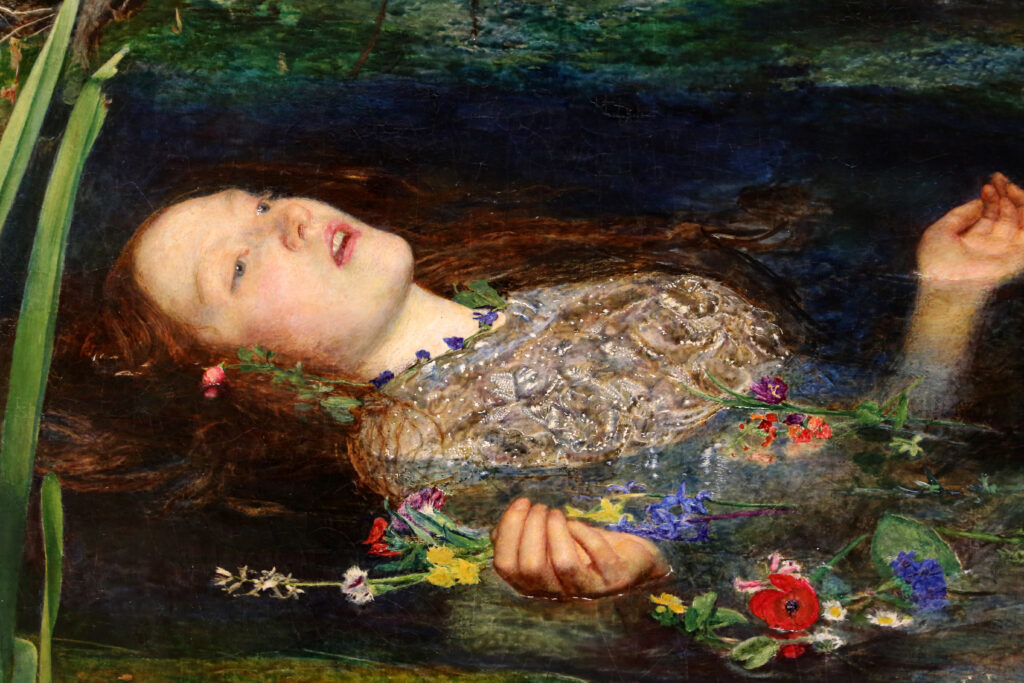Introduction:
In the midst of the 19th century’s vibrant artistic milieu, one name shone brightly as a beacon of innovation and creativity: John Everett Millais. This comprehensive article delves deep into the life, artistic evolution, and significant contributions of Millais, offering a detailed exploration of his profound impact on the Pre-Raphaelite Brotherhood and the broader Victorian art movement.
Early Life and the Genesis of the Pre-Raphaelite Brotherhood:
Born on June 8, 1829, in Southampton, England, John Everett Millais exhibited prodigious artistic talents from a tender age. Fueled by an insatiable curiosity and a passion for painting, Millais would eventually co-found the Pre-Raphaelite Brotherhood—a radical group of artists determined to challenge the status quo of artistic expression. This innovative alliance aimed to deviate from the prevailing norms of the Royal Academy, advocating for a return to the vivid, detailed aesthetics of the pre-Renaissance era.
Artistic Breakthroughs and Influences:
Millais’ artistic odyssey commenced with the creation of “Christ in the House of His Parents,” a painting that simultaneously garnered acclaim and controversy. This early masterpiece showcased his daring approach to religious themes, portraying the Holy Family in a stark and realistic setting. The minutiae of details and vivid colors heralded the emergence of Millais’ signature style.
His inspirations were deeply intertwined with literature, as he deftly transformed scenes from Shakespeare’s plays into captivating visual narratives. His paintings of Shakespearean characters, such as “Ophelia,” not only depicted the literary subjects but also breathed new life into them through his meticulous attention to detail and emotional resonance.
Notable Works:
- Ophelia (1851-1852): Among Millais’ most lauded pieces, “Ophelia” immortalizes the tragic heroine from Shakespeare’s “Hamlet.” The painting’s intricate portrayal of Ophelia’s watery demise amidst a lush, ethereal landscape epitomizes Millais’ commitment to intricate detailing and emotional depth.

- The Blind Girl (1856): A testament to Millais’ social awareness, “The Blind Girl” captures a poignant encounter between a blind beggar girl and a young boy. This piece masterfully contrasts the girl’s heightened sensory perceptions with the world’s vivid surroundings, serving as a poignant commentary on empathy and compassion.
- The Boyhood of Raleigh (1870): Transporting viewers to the Elizabethan era, this historical masterpiece depicts a youthful Sir Walter Raleigh enraptured by tales of maritime exploits. Millais’ ability to weave historical narratives into vibrant, realistic tableaus is showcased brilliantly in this work.
Evolution of Style and Themes:
As the Victorian era progressed, Millais’ artistic prowess evolved to encompass an array of subjects, from poignant portraits to sweeping landscapes. His journey was marked by a willingness to experiment with styles, themes, and techniques. The “Bubbles” series, for instance, showcased his ability to infuse charm and innocence into genre painting, capturing the fleeting moments of childhood in captivating detail.
Legacy and Later Contributions:
Millais’ influence on the artistic world extended beyond his canvases. In 1896, he ascended to the presidency of the Royal Academy, a testament to his impact on the artistic establishment. His leadership helped bridge the gap between the Pre-Raphaelite ideals of the past and the evolving artistic landscape of the 20th century.
An Enduring Legacy:
John Everett Millais’ artistic journey stands as a testament to unparalleled talent and unyielding dedication. His pivotal role in the Pre-Raphaelite Brotherhood, coupled with his emotive and enthralling oeuvre, ensures that his legacy continues to captivate artists, scholars, and enthusiasts alike. Millais’ enduring resonance within the Victorian art movement cements his position as an iconic figure whose contributions remain integral to the fabric of art history.
Inviting Art into Everyday Life:
For those seeking to carry a piece of this legacy with them, there’s no better way than through beautifully designed merchandise. Poison Design’s shop offers a range of products inspired by Millais’ masterpieces, including exquisite hoodies, captivating PopSockets, and timeless t-shirts. By owning a piece of art-inspired merchandise, you not only celebrate Millais’ heritage but also contribute to keeping his spirit alive in contemporary culture. Each product serves as a conversation starter, a tangible connection to the world of art, and a reminder of the timeless beauty that Millais’ creations embody.
In embracing the allure of Millais’ art and its modern-day representations, you invite his genius into your everyday life. So why not explore Poison Design’s shop today and discover the perfect piece of art-inspired merchandise to infuse your world with a touch of timeless elegance and artistic flair? Embrace the legacy; wear the art.
Conclusión about John Everett Millais:
In conclusion, the story of John Everett Millais is one of artistic evolution, daring exploration, and enduring influence. From his early days as a prodigious young talent to his role in shaping the Pre-Raphaelite movement and beyond, Millais’ impact on the art world is immeasurable. His ability to weave historical narratives, capture poignant moments, and infuse emotions into his works continues to captivate audiences across generations.

As we immerse ourselves in Millais’ intricate canvases, we’re invited into a world of vibrant colors, meticulous details, and profound emotions. His legacy persists not just in the annals of art history but also in the very fabric of our culture. Through the art-inspired merchandise available at Poison Design’s shop, we can carry a piece of this legacy with us, inviting conversations about art, history, and creativity into our daily lives. John Everett Millais’ journey inspires us to appreciate the beauty that surrounds us and to embrace the power of art to transcend time and space.
